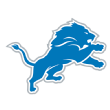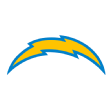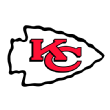The Dallas Cowboys once faced a dream scenario to secure three offensive stars at pricey-but-not-crippling rates:
Extend quarterback Dak Prescott somewhere in the mid-to-high $20 million range per year
Re-sign Amari Cooper at a high price but not atop the receiver market, perhaps in the range of $16 million to $17 million per year
Wait until 2020 to negotiate an extension with Ezekiel Elliott, with his fifth-year option buying the Cowboys time
Plans can change quickly in the NFL, which saw Elliott retreat to Cabo to stir his own drinks, a quarterback market balloon well over $30 million in a matter of months and New Orleans Saints wideout Michael Thomas salute Cooper with one helluva market reset. With Week 1 closing in, all three players are swinging for the upper deck.
Negotiating with a bevy of star players is the best and worst problem to have. The Cowboys acquired elite talent and will probably make it all work. But that $23 million in 2019 cap space will be yoga-stretched, which raises an obvious question: How many stars can teams really handle in today's NFL?
Holdouts are trendy again. Players are tiring of affordable contracts and actually have a sliver of leverage now. Six players held out to start training camps, and one league source said teams anticipated at least nine. A few players surprisingly showed up; Kansas City Chiefs defensive tackle Chris Jones is believed to be one of them.
The looming expiration of the collective bargaining agreement has players trying to beat the clock on a potential lockout. At least one NFC exec is leery of the trend. "Guys you are counting on to lead your team who have time left on their deals just decide to disappear," the exec said. "It's a different time."
The numbers help tell the story about a star-capped league. Fourteen NFL teams have less than $10 million in salary-cap space as of this week, and those teams average about 6.5 players with a cap hit of $8 million or more in 2019.
The cap-savvy Minnesota Vikings lead that group, with nine players above that threshold, and the New York Giants and New England Patriots have four apiece. The Patriots are masters at surrounding Tom Brady with affordable contracts. And the Giants ... well, they just traded away several bloated ones.
Pittsburgh Steelers guard Ramon Foster knows star power is "a gift and a curse." He would understand. He's fresh off the contract upheaval of Le'Veon Bell's franchise-tag exile that emboldened this year's holdouts and Antonio Brown's forcing his way out of town.
"I think it's more or less how many humble stars you can have," Foster said. "Having a team full of all-stars is one thing, but controlling those attitudes and how they want to be seen and what their role is going to be is another aspect of that. We've done a good job of it, but sometimes the situation can get bigger than you think or the money can get bigger than what you're willing to give them. ... You can't make everybody happy. If you try to please everybody, you go to crap."
At least eight teams will be trying to evade that fate next year. Below is a breakdown of teams that could feel the star-power crunch with difficult decisions in 2020. To be sure, not all of these teams have bleak salary-cap outlooks, but their front-office mettle will be tested as they try to build a healthy roster for years against the backdrop of star players due new money.

Pittsburgh Steelers
Projected 2020 cap space: $7,736,094 (No. 25 in NFL)
Extension candidates: Foster joked that JuJu Smith-Schuster makes more money from social media than from his base salary of $1.144 million. Those rookie deals are glorious for teams' operating costs, but the Smith-Schuster bargain won't look so appealing a year from now. The Pro Bowler will be in a similar position to Thomas, a former second-round pick with a 100-catch pedigree and dreams of $20 million per year.
Pittsburgh's top two playmakers, Smith-Schuster and James Conner, enter Year 3 of the four-year rookie deals they've already outplayed. As a team that often operates with less than $10 million in cap space, the Steelers will get creative to address the futures of young talents and established veterans. At least that $21.12 million in dead money from the Brown trade will come off the books in 2020.
Veterans to watch: Defensive end Cameron Heyward and left tackle Alejandro Villanueva are still high-level players at age 30 and want one more poke at the market. Particularly Villanueva, who's vastly underpaid at four years and $24 million. He took a low deal as an exclusive rights free agent two years ago and is now a two-time Pro Bowler. Heyward still has one of the best D-line motors in football and will put that motor into "new money" gear in 2019.
Short-term fixes: The Steelers' Way is to restructure contracts of pricey vets they know will stay productive as a way to manage the cap. With Ben Roethlisberger's $33.5 million cap hit in 2020, they will need more of that.
The Steelers are working on a two-year extension for Joe Haden, whose final year on his current contract carries an $11.916 million cap hit. Top-shelf corners command at least $10 million per year. The team also would like to re-sign defensive tackle Javon Hargrave.

Dallas Cowboys
Projected 2020 cap space: $72,151,926 (No. 2 in NFL)
Prescott's reset: The Cowboys enjoyed a three-year run with the game's best contractual home-field advantage: A starter playing on a paltry rookie deal. But Prescott's cap hit of $2.12 million is about to multiply by about 10, depending on how the Cowboys backload the new deal. Whichever way you feel about Prescott, the market might just say he's a $30-plus-million-per-year quarterback.
But what about all that cap space? That number will drop significantly. Too many guys are up for deals sooner than later. Cooper has an agent, Joel Segal, who last year waited for Aaron Donald to sign before coming over the top with Khalil Mack's megadeal. Cooper isn't exactly at Mack's positional stature, but he can try the same method coming off Thomas' $20 million-per-year pact.
Dallas can still employ a franchise and transition tag in the same year, but such an aggressive move on Prescott and Cooper could prompt locker room unrest.
Zeke, Cowboys not close: Elliott recently made a counteroffer to the Cowboys, according to a source, but a separate source said both sides haven't been "in the same zip code" on money for much of August.
Elliott has something Melvin Gordon and Bell didn't through their holdouts: a backfield without an elite quarterback. That's his play in negotiations -- pay the man who catalyzes your game plan. That should lead him to a deal atop the market, somewhere $15 million per year or up.
Who else to re-sign? Not to be lost is linebacker Jaylon Smith, a 2020 free agent and one of the best stories in recent Cowboys history. His emergence as a defensive leader makes it doubtful Dallas lets him walk into free agency. The Cowboys must be prudent in how they configure Year 2 and 3 payouts to find some cap relief, especially with offensive line stalwarts Tyron Smith, Zack Martin and Travis Frederick under contract until 2023.
Re-upping defensive back Byron Jones, also a 2020 free agent, might just be a breezy proposition after this month is over.

Detroit Lions
Projected 2020 cap space: $29,494,553 (No. 21 in NFL)
Under-the-radar player to watch: The Lions don't have any pressing issues now, but will face at least two by next summer. One is Kenny Golladay, who isn't a marquee name, but there's already buzz in league circles that the team's new No. 1 receiver will play his way into huge money in 2020, and any top-10 receiver is getting at least $16 million per year now. He's targeting the 100-catch mark in his third year.
A team with uneven post-Calvin Johnson production from skill spots will want to prioritize him. Steadily improving Taylor Decker, a free agent in 2021, will want in on the $12 million-and-up tackle market.
Guy who's underpaid: Darius Slay is 28 and should have more prime years left. Considering he says he's underpaid now at $12.55 million, he won't have to say it at $10 million in 2020. He can talk with his holdout. If Kareem Jackson just got $11 million per year at age 31, Slay doesn't want to play for less than that.
How to create breathing room: For cap relief, the Lions can attempt to restructure Matthew Stafford's $31.5 million cap hit. There's a clean break available with defensive tackle Damon Harrison at $9.25 million next year, but the Lions still value his run-stuffing at age 30.

Jacksonville Jaguars
Projected 2020 cap space: -$16,788,685 (No. 31 in NFL)
Biggest re-sign or let-leave decision: By next training camp, Jalen Ramsey will be strapping $100 bills on his helmet after every good play like Ohio State with the buckeye symbol. The Jaguars have acquired enough defensive talent to believe they are one quarterback away, and with Nick Foles possibly tied to the team until 2022, Ramsey's otherworldly talent will test their draft, develop and pay blueprint.
Jacksonville must decide whether the mercurial corner is worth a complete market reset. The tone he sets on and off the field in 2019 will help determine that.
Player to pay now -- or next year: The Jags must figure out defensive end Yannick Ngakoue, who has eight or more sacks in each of his first three seasons. Signing him now before a double-digit-sack performance in 2019 would be wise. Playing this out and franchise tagging him in 2020 isn't off the table either.
What's next for an expensive defense? The Jaguars have $100.6 million dedicated to defense in 2019, which makes Foles' $22.1 million cap hit next year look sensible. Defensive end Calais Campbell is playing well enough to turn his $15 million cap savings in 2020 into a potential re-sign as he approaches 33. But those savings are available without penalty if the team parts ways.
Corner A.J. Bouye's five-year, $67.5 million deal signed in 2017 has a three-year out to save $11.5 million, but good corners are hard to replace.

Los Angeles Chargers
Projected 2020 cap space: $50,814,680 (No. 9 in NFL)
Next steps with Melvin Gordon: As if Gordon didn't already feel disrespected by the Chargers' offer of around $10 million per year, Gordon and his agents have attempted to bridge the gap of the top backs ($13 million and up) with incentives, with no success.
Gordon is considering all options, including a holdout until midseason, just in time to avoid his contract tolling and accruing a year toward free agency. But the Chargers appear dug in on this and hope Gordon reports before Week 1, on their terms.
Another holdout looming? Gordon might not be the most underpaid player on the roster. Making a case is receiver Keenan Allen, who is due $10.5 million in 2020, the final year of his deal.
Some evaluators have him as a top-five to top-seven receiver in the league after he shed the injury-prone label and became a matchup headache for any coverage. Only 27, Allen might also be staying home next offseason and holding out to accentuate his worth to the team.
New Philip Rivers money: Somehow Rivers is staying low-key on an absurdly reasonable contract that pays $11 million in the final year of his deal. Any new three-year pact would dwarf that cap number in Years 2 and 3. But that's an easy call for Los Angeles to make.
Potential savings: Left tackle Russell Okung's cap savings of $13.5 million is available in 2020 if he underperforms or if a healthy Forrest Lamp can slide outside.

New Orleans Saints
Projected 2020 cap space: $24,704,134 (No. 22 in NFL)
Empty money: Though on relatively stable ground, the Saints' penchant for dead money makes them a fixture on lists like this, and this year is no different. New Orleans has $16.3 million of dead money on its books in 2019 and $26.3 million in 2020. The good news for New Orleans: It has good players. Cameron Jordan and Terron Armstead can hold down lengthy deals.
The most predictable scenario: Drew Brees, once again a free agent in March, completes almost 400 passes at a 70% clip and gets re-signed for another two years. The 40-year-old surgeon is still running things at Smart Tech. Only an obvious decline in 2019 should force New Orleans to turn to Teddy Bridgewater or a draft pick full time.
Less predictable: Trying to define Alvin Kamara's unicorn skill set in a sluggish tailback market. Even top-three backs Bell and David Johnson hover around $13 million per year, and Todd Gurley's injury issues aren't helping the cause. But imagining the New Orleans offense without Kamara is like imagining Bruce Springsteen concerts without dad jeans. They make too much sense together.
Protecting the defense: Paying Brees and Kamara and stabilizing an improved defensive backfield -- the team hasn't launched negotiations with safety Vonn Bell despite his 2020 free agency; Marcus Williams and Marshon Lattimore are up in 2021 -- could prove costly.

Kansas City Chiefs
Projected 2020 cap space: $6,998,358 (No. 27 in NFL)
The Patrick Mahomes dilemma: Most quarterbacks drafted in the first round with three years of experience or less keep their teams off this list, but another 50-touchdown season from Mahomes would heighten talks of a record-breaking contract in his future.
The Chiefs have options -- most notably, waiting until after Mahomes' fourth season, using his fifth-year option as protection. The quarterback market keeps rising in that case, and so does Mahomes' value.
The Tyreek Hill question: A new deal for Hill this preseason will eat a portion of the Chiefs' $24 million in 2019 cap space, and his off-field issues might offer only a slight discount. Teams almost always pay for speed.
Who could get released? Edge rusher Frank Clark's $22.7 million cap hit in 2020 should force the Chiefs to show how much they like Sammy Watkins, who's due $13.75 million next year. That's a lot of coin for a team's No. 2 receiver.
How to pay Chris Jones: Grady Jarrett's deal in Atlanta can serve as a road map for Jones, who would kill in 2020 free agency. The franchise tag seems a sensible option here. The Falcons did the same with Jarrett, then settled on a four-year, $68 million deal with the interior force this summer.

Carolina Panthers
Projected 2020 cap space: $35,312,504 (No. 17 in NFL)
Cam Newton's new market: There's a simple reason Newton has every incentive to ball out this year: that $18.6 million base salary on the final year of his contract in 2020. Newton wants in on that new QB money and will have every chance to show polish as a passer, spreading the ball to formidable weapons Christian McCaffrey, Curtis Samuel, Greg Olsen and DJ Moore.
The looming issue is a shoulder that might force one of the NFL's strongest arms into more of a quick passing game. Determining the strength of that shoulder isn't so clear-cut, but Newton can bet on himself in 2019.
RB1: Running backs are aggressive in pushing a dated positional market into this decade, so a McCaffrey holdout next summer isn't totally out of the question, right? Maybe not, but the Panthers must plan for his future now. When the Panthers don't want to run the ball, McCaffrey can fit seamlessly in a five-wide, zero-RB attack.
Key pieces to re-sign: Shaq Thompson, a free agent after this year, is a 25-year-old staple for a defense trying to get younger, but he hasn't played his way into a megadeal just yet. Getting ahead of that production now with a sensible contract extension might be prudent. The Panthers also want to keep corner James Bradberry, one of Pro Football Focus' top-rated cornerbacks in the NFC South last year.
High-priced player to watch: Defensive tackle Kawann Short just turned 30, and despite a Pro Bowl performance in 2018, the Panthers can save $10 million off the cap by releasing him next year ($14 million with a post-June 1 designation). He might want to have another good season, just in case.
